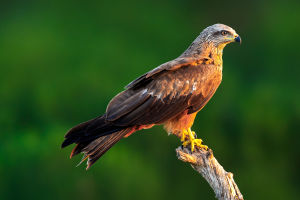The Eurasian lynx is a widespread, mysterious, and unique member of the feline family.
They inhabit the forests, mountains, and cold regions of the Eurasian continent and are highly adaptable predators.
This article explores the physical characteristics, behavioral habits, and conservation status of the Eurasian lynx, helping us better understand this fascinating wild animal.
1. Physical Characteristics
The Eurasian lynx is of medium size, with a body length typically ranging from 80 to 130 centimeters, a tail length of 10 to 20 centimeters, and a shoulder height reaching up to 70 centimeters.
Their weight generally ranges from 18 to 30 kilograms, with males usually being slightly heavier than females. One of the most notable features of the Eurasian lynx is its pointed ears, tipped with black tufts of hair, which make it easily recognizable in the wild.
Their fur is thick and long, with a winter coat usually being light brown or grayish-brown, and a darker spotted pattern on the back. In summer, the fur becomes shorter and lighter in color. This fur not only helps them retain body heat in cold environments but also aids in camouflage within their habitat. The lynx’s long legs assist in walking through snow and responding quickly when prey is detected.
2. Behavioral Habits
The Eurasian lynx is a solitary animal, typically living and hunting alone. Its home range can be very large, especially during food-scarce seasons.
They primarily feed on mammals such as hares, squirrels, and small deer, but will also prey on birds and insects. They are highly efficient hunters, adept at using their excellent hearing and vision to track prey.
The hunting techniques of the Eurasian lynx are varied. They can either ambush prey by waiting for it to come close or actively pursue it. Their sharp claws are useful for climbing trees and catching prey. While they mainly hunt at night and dawn, they may also be active during the day in some cases.
The breeding season usually occurs in winter, with females giving birth in spring. Pregnant females choose a concealed location for their den, often in tree hollows, rock crevices, or thick piles of branches. Each litter typically consists of 2 to 4 cubs, which rely on their mother’s care until about 6 months of age when they begin to live independently.
3. Conservation Status
Although the population of the Eurasian lynx is relatively stable in some areas, it still faces certain threats.
Habitat destruction, deforestation, and a reduction in prey populations pose risks to its survival. In particular, human expansion in some regions has led to severe habitat loss, forcing the Eurasian lynx to confront the problem of habitat reduction.
To protect the Eurasian lynx, many countries and regions have implemented conservation measures, including the establishment of nature reserves and hunting bans. The International Union for Conservation of Nature (IUCN) classifies the Eurasian lynx as a species of "Least Concern," but this does not mean its survival is entirely secure. Protecting its habitat and improving the management of human activities are key to ensuring its long-term survival.
Conclusion
As a mysterious feline species, the Eurasian lynx demonstrates the wonders of nature through its unique physical traits and strong adaptability. Despite facing numerous challenges, there is hope for the future of this captivating species through scientific research and conservation efforts.
Understanding and protecting the Eurasian lynx is not only a mark of respect for nature but also a commitment to maintaining ecological balance. We hope that future efforts will continue to provide a safe habitat for these enigmatic creatures.


